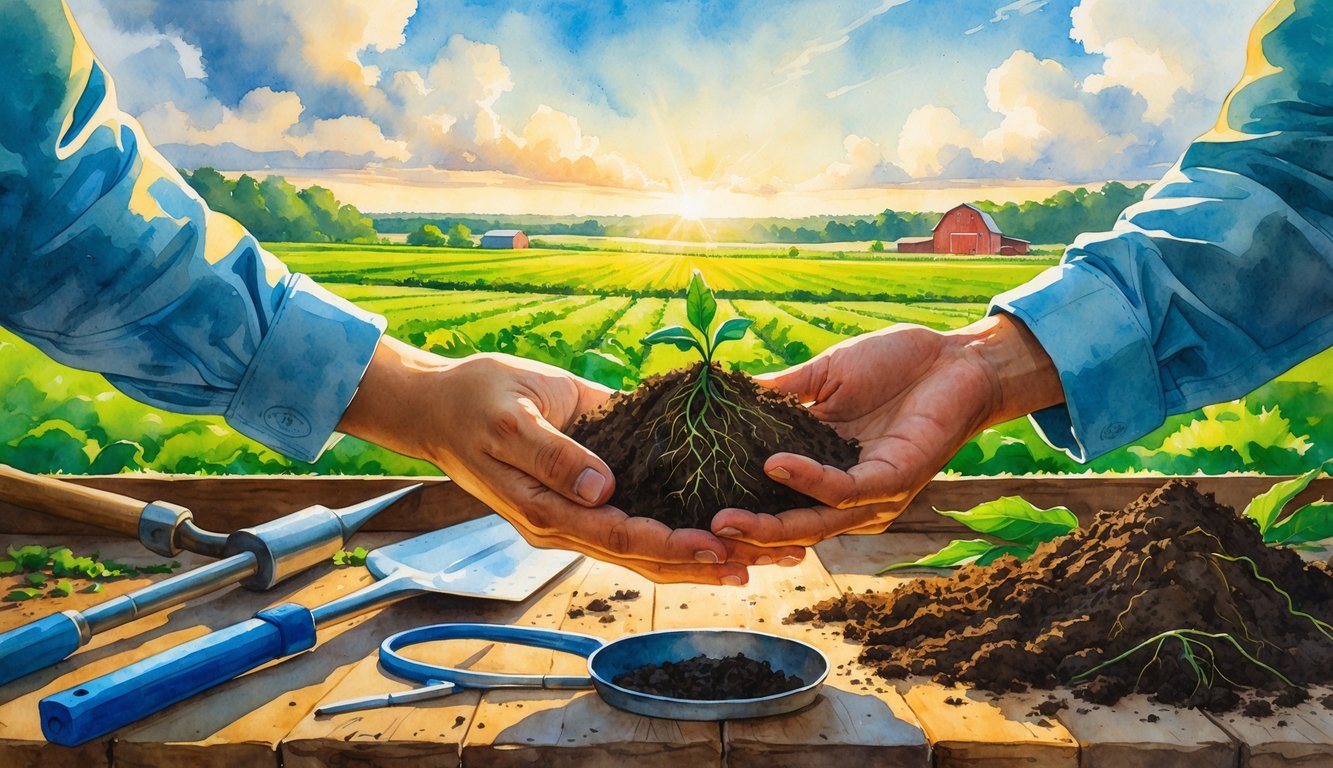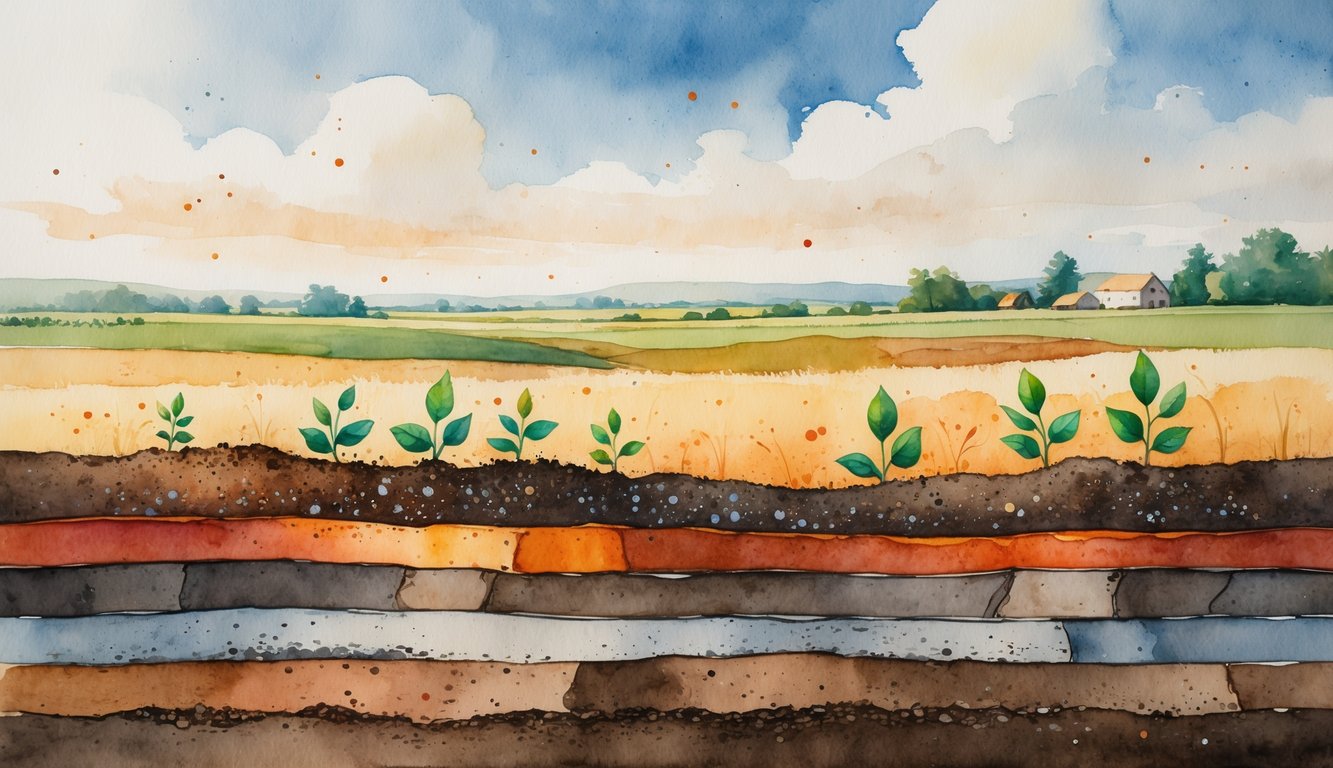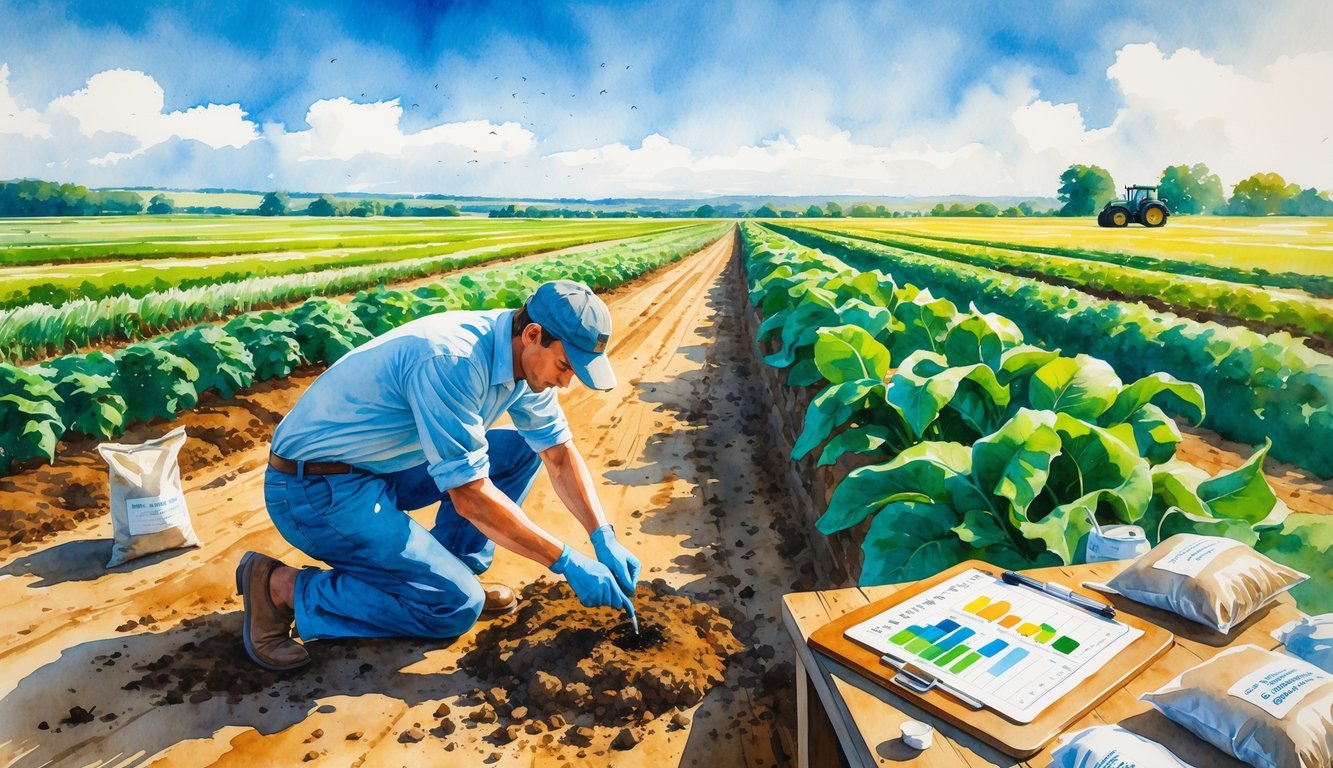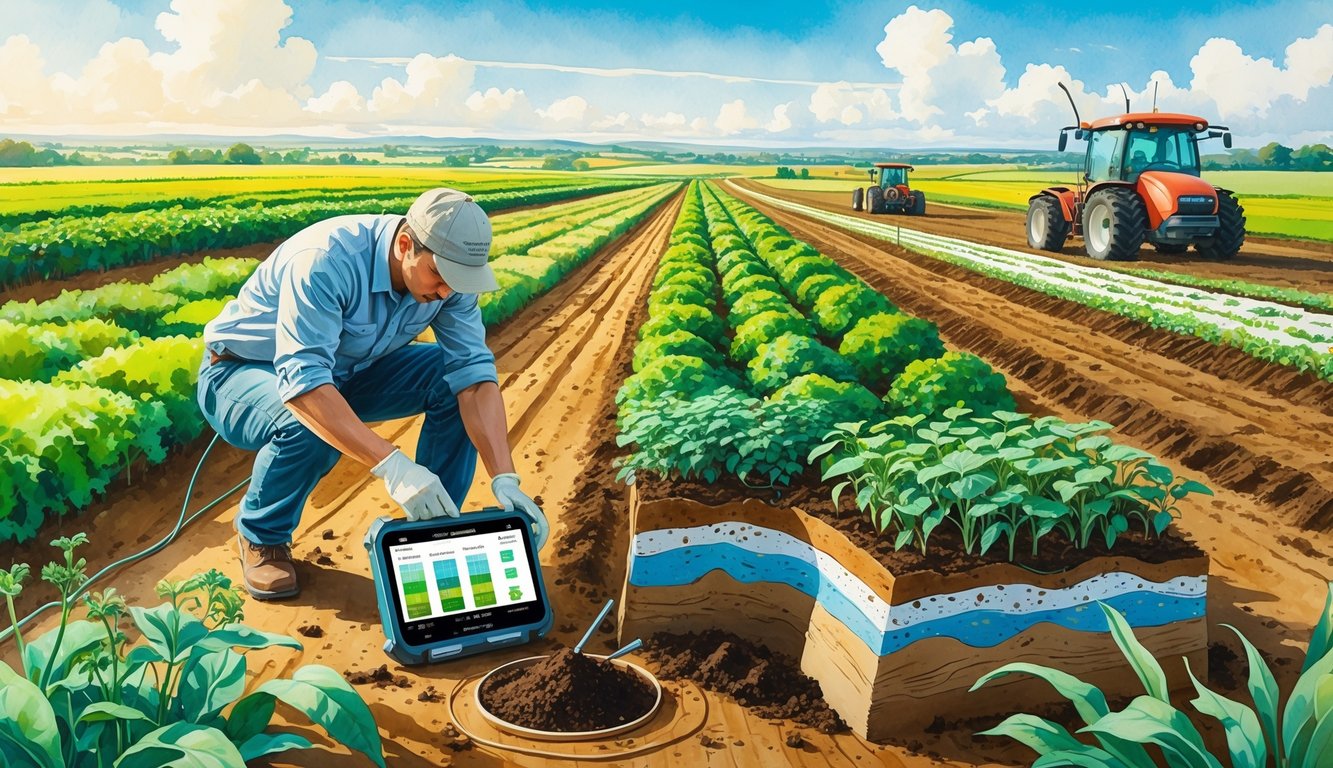
Soil pH, Acidity, and Alkalinity Management

Why does soil pH, of all things, cause so much stress? Calculus is easier. Everyone obsesses over “perfect” pH, but ignores what actually swings it. Acidic soil? Aluminum toxicity, runoff, dead spots, and no, rain won’t fix it. Alkaline? Plants just sit there and sulk. I lost three tomato crops to high pH, and I’m still annoyed.
How Soil pH Impacts Plant Growth
When pH drifts from neutral (7, if anyone’s counting—my old prof said “7 is peace, 5 is war”), nutrients like phosphorus just disappear. Not really, but they get locked up. People dump on fertilizer when their soil, at pH 5.5, couldn’t release potassium if you bribed it.
Here’s a fact: every drop in pH by one whole number makes the soil ten times more acidic. That’s not a guess—check the soil pH guide. Root hairs just give up, unless you’re growing blueberries, which honestly shouldn’t be allowed near cabbages.
Micronutrients get weird, too—a little extra alkalinity (pH 8) and iron, manganese, boron, they all go out of reach. Last spring, my petunias turned yellow and miserable because I ignored a high pH. Throwing Epsom salt at yellow leaves is cheaper than a soil test, but it’s pretty much pointless.
Correcting Acidity and Alkalinity Issues
Tried to fix acidity once by just tossing on lime—forgot it matters how fine the lime is, and what the field’s buffer capacity is. Fast fixes always backfire. Most advice skips the pain: you have to test every year, same method, same time—here’s the official detail if you think you can skip it.
Lime doesn’t work overnight. I had a spot where it took two years for the pH to finally move. Gypsum? Just because someone on a forum swears by it for alkali soils doesn’t mean it’ll do anything for you. High pH is stubborn. Elemental sulfur can help, but mess up and you’ll fry your soil—been there, done that.
Test before you guess, size your lime or sulfur by the ton per acre, and check again later. Otherwise, you risk burning roots or just wasting money. Clay hangs onto acidity like a grudge. If you think compost will magically fix pH, settle in—it’ll take years. Sandy soil? The pH jumps just from watering, so overdoing it is like using a blowtorch on toast.
Optimizing Fertilizer Application

Soil tests just sit there, mocking every dumb guess I’ve made. Miss one nutrient and it’s like overcooking pasta—whole thing’s shot. Nitrogen, phosphorus, potassium: three numbers that decide your whole season, but nobody warns you how local the rules get. One “extra” handful and you’re out real money.
Site-Specific Fertilizer Strategies
Green spots, bare patches—seriously, blanket rates for fertilizer are a joke. They work until the wind kicks up or the field gets weird, and then you’re back to square one. Advisors love talking about site variability: move ten meters and you might need twice as much potassium, or half. Purdue’s got data showing up to 80% nutrient variability in Midwest fields. That’s not a typo.
GPS rigs and variable-rate applicators aren’t just for show. I like being able to say, “Hey, we’re not wasting money on extra nitrogen.” Mobile analysis tools—apps like GeaGrow—let me check three spots in a minute and auto-adjust by zone. Precision ag isn’t about toys; it’s about not repeating last year’s embarrassing field photos. Tried a statewide phosphorus rec once—my south slope laughed at me, then stunted all season. Never again.
Balancing Nutrients for Maximum Benefit
People act like fertilizer is just about yield, but they’re missing half the story. The real trick is balance: every pound of nitrogen could shortchange potassium or phosphorus. The “law of the minimum” isn’t just old news—it’s the reason one missing nutrient can sink a whole field. Advisors’ faces when you mention tissue testing at jointing? Priceless.
One year, I switched out a generic N-P-K blend midseason after a potassium deficiency showed up. Two weeks later, leaf curl was gone. Not magic—just timing and paying attention. AI-driven recs are better than guessing. Last year, I fed a corn plot based on predicted phosphorus uptake, and after a downpour, not a single yellow tip. If your advisor won’t shut up about “balance,” it’s because nobody survives three years of weak roots and toppled plants, spreadsheet or not.
Integrating Precision Agriculture with Soil Testing

Honestly, the amount of trial and error I see is ridiculous—soil results in one hand, sensors screaming numbers in the other, and some guy’s cousin swears you just need more nitrogen. Why ignore tech and data? That’s just asking to lose money and trash your soil. The plain truth: if you’re not using precise nutrient analysis and real-time monitoring, you’re just burning cash and hoping for the best.
Harnessing Technology for Better Results
Alright, so, you ever find yourself elbow-deep in a bucket, hand-mixing some janky test kit, and thinking, “Wow, these portable sensors are just overpriced gadgets for people with too much money?” Been there. But, annoyingly, those new IoT soil probes actually spit out real-time moisture, pH, conductivity, and temperature numbers. Like, instantly. Not next week, not after you drive to town and wait for a lab tech to call you back. It’s wild. The whole “mail it to a lab and pray” thing? Feels ancient—especially if you’ve got fields so remote you need a packed lunch just to get there.
I mean, have you seen these real-time soil monitoring systems? They mash up soil readings and weather data, so you can watch numbers jump as a storm rolls in or fertilizer washes out. I’m not saying the industry hype isn’t mostly nonsense (it definitely is), but Dr. Priya Neela from Sesi Technologies? She swears by constant, multi-parameter sampling. And honestly, flipping between those dashboards and my crusty old Excel sheets is like watching TV in black-and-white, then suddenly in 4K. Sometimes it’s overwhelming, but I can’t help getting hooked on the precision.
Oh, and don’t remind me about those times I blew cash on fancy granular tests, only to have some microclimate around a pivot screw up the entire section. Every field is its own weird little universe. If you’re still clinging to “walk and guess” or refusing to try digital soil testing, fine, but good luck catching nutrient drift or crop stress before it costs you.